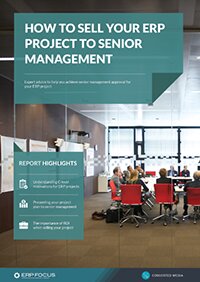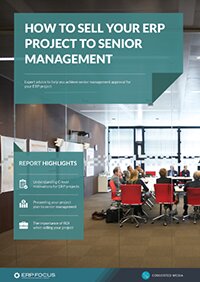3 tips for achieving buy-in for your ERP integration
When looking to achieve ERP integration buy-in, starting on the right foot is critical to steering a successful project. Without the support of key enterprise colleagues early on, even your most valuable ERP integration ideas may go fallow.
At the outset, while it may seem like involving senior leadership first makes the most sense, today’s complex ERP projects benefit from a “middle-out” approach, starting with managers closest to daily operations. This approach leverages wider departmental input, helping secure early buy-in and laying a collaborative foundation to move up the management chain.
Involve operational managers first
In my own varied experiences of enterprise integrations, the most successful projects began by involving managers actively engaged in day-to-day operations, either on-site or remotely. These on-the-ground managers often immediately recognize the value of ERP integration or, at the very least, are willing to consider the business rationale due to their direct exposure to operational challenges.
This alignment is more crucial now than ever before, with 85% of companies expected to be cloud-first by 2025 to enhance efficiency and enable real-time data sharing across departments. With clear interest established, the next step is approaching finance—the department where project feasibility is scrutinized and budgets are set.
Recommended reading: Our guide to selling your ERP project to senior management will help you achieve executive-level buy-in for new software.
Forget ROI.....for now: Focus on immediate, tangible benefits
In conversations with financial teams, the discussion often goes straight to budget specifics, but the emphasis should first be on value rather than long-term ROI. While ROI calculations are necessary, leading with a focus on quick-win, cost-saving opportunities resonates better with financial leaders who are currently focused on immediate gains. Recent studies show that the top three strategic finance priorities for 2024 are enhancing cash flow (74%), cutting expenses (48%) and increasing revenue (42%).
Presenting practical, fast-to-implement solutions that streamline financial processes—such as automated reporting or real-time data consolidation can appeal to finance departments initially reluctant to approve new ERP expenses. This upfront, value-focused approach also paves the way for a broader conversation around long-term ROI as trust in the project grows.
Demonstrate immediate value to secure buy-in at all levels
Many enterprise technical managers still make the mistake of relying on ROI projections to sell ERP integration projects, and they often find that this strategy falls short. While ROI may seem the obvious business play, it’s often seen as secondary in the early phases of a project proposal. Instead, focus on demonstrating value from day one with metrics such as time saved, improved cross-departmental coordination, and simplified workflows - benefits that are immediately recognizable to managers, finance teams, and senior leadership alike.
Many enterprise technical managers make the mistake of working on ROI valuation alone to sell an ERP integration project
Conclusion
Many of today's ERP integrations are driven by immediate operational benefits such as enhanced forecasting accuracy, streamlined resource allocation and time savings for teams. These measurable gains provide clear evidence to finance leaders and on-the-line managers, establishing project credibility that ultimately makes buy-in from higher-ups more likely.
By securing support from operational managers and finance teams first, senior leaders are more likely to view the project as validated by those directly benefiting from it, thus rubber-stamping approval with greater ease.
Free white paper

How to sell your ERP project to senior management
Expert advice to help you achieve approval and funding for your ERP project

Featured white papers
-

ERP Software Pricing Guide
Get the latest pricing information on over 80 popular ERP systems, and learn how to budget for your ERP project in our free guide
Download -

Calculating ERP ROI: 5 steps to success
Calculate your new ERP's financial benefits with this comprehensive guide
Download -

How to sell your ERP project to senior management
Expert advice to help you achieve approval and funding for your ERP project
Download
Related articles
-

Nine signs you need an eCommerce ERP integration
A guest blog from Brightpearl discussing eCommerce ERP and integration
-

Secret KPI: Why Your ERP Implementation Team Matters More Than Software
Learn how Godlan ensures successful ERP implementation for manufacturers with proven strategies &...
-

Top 10 ERP selection criteria (including checklist)
The most important ERP selection criteria you should keep in mind during your selection process.

